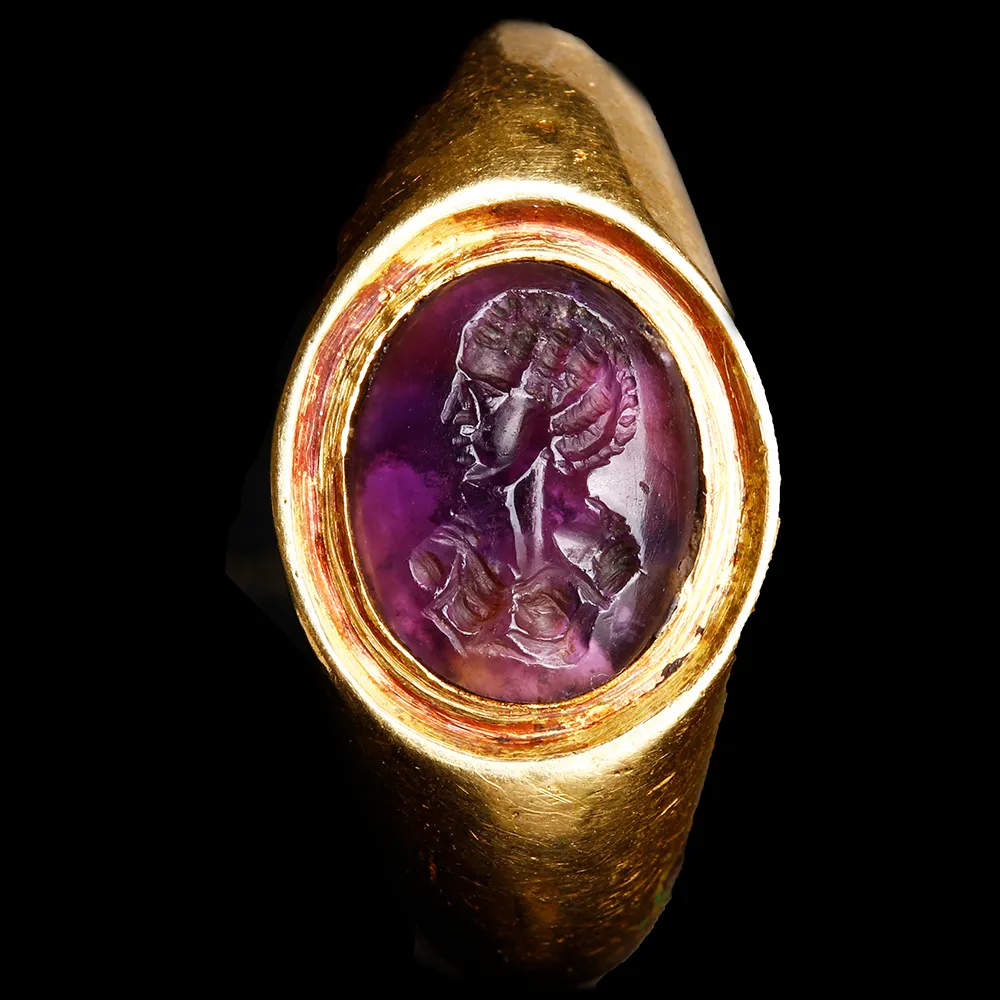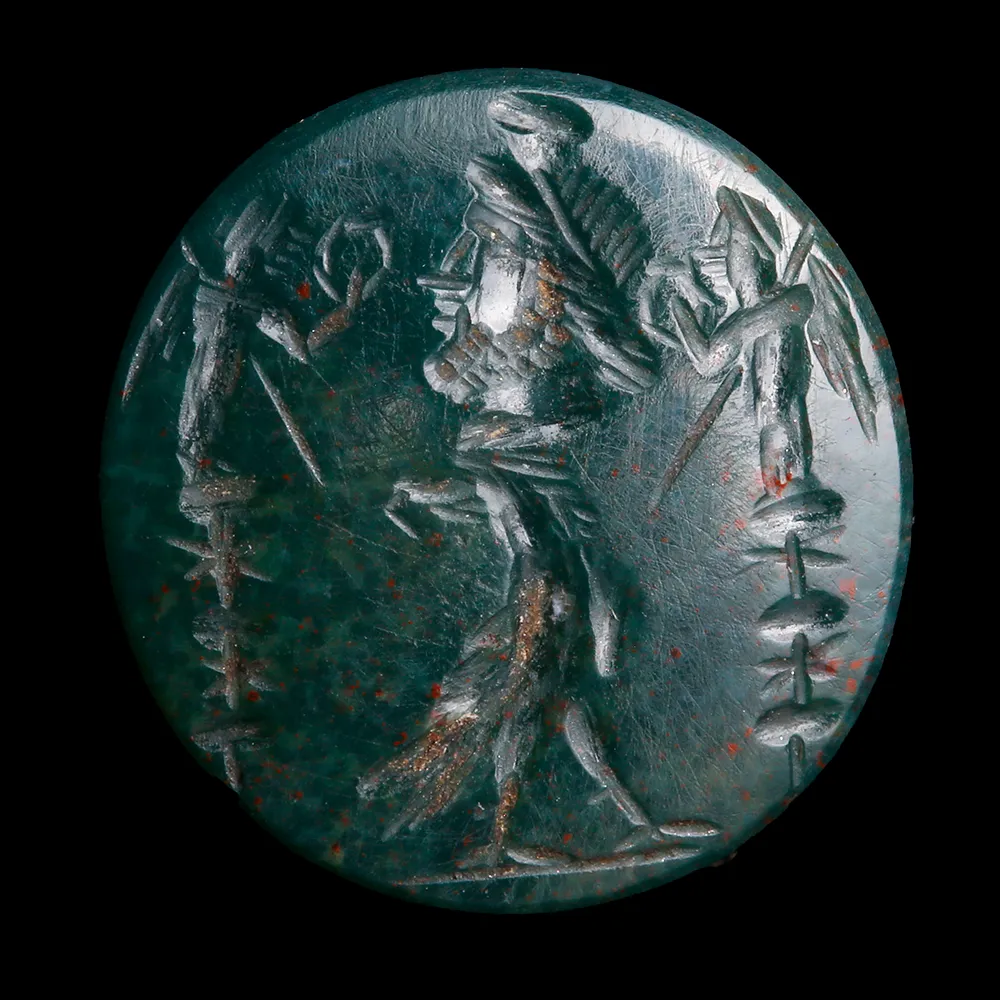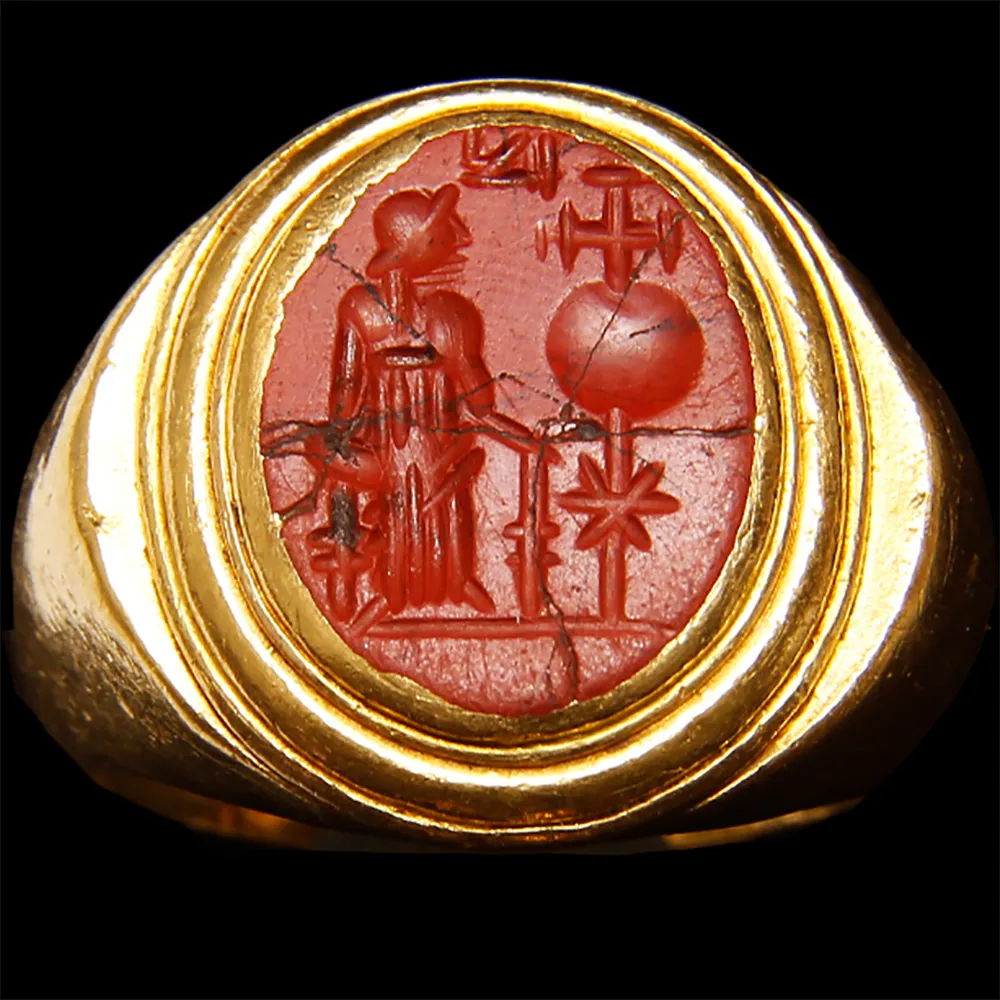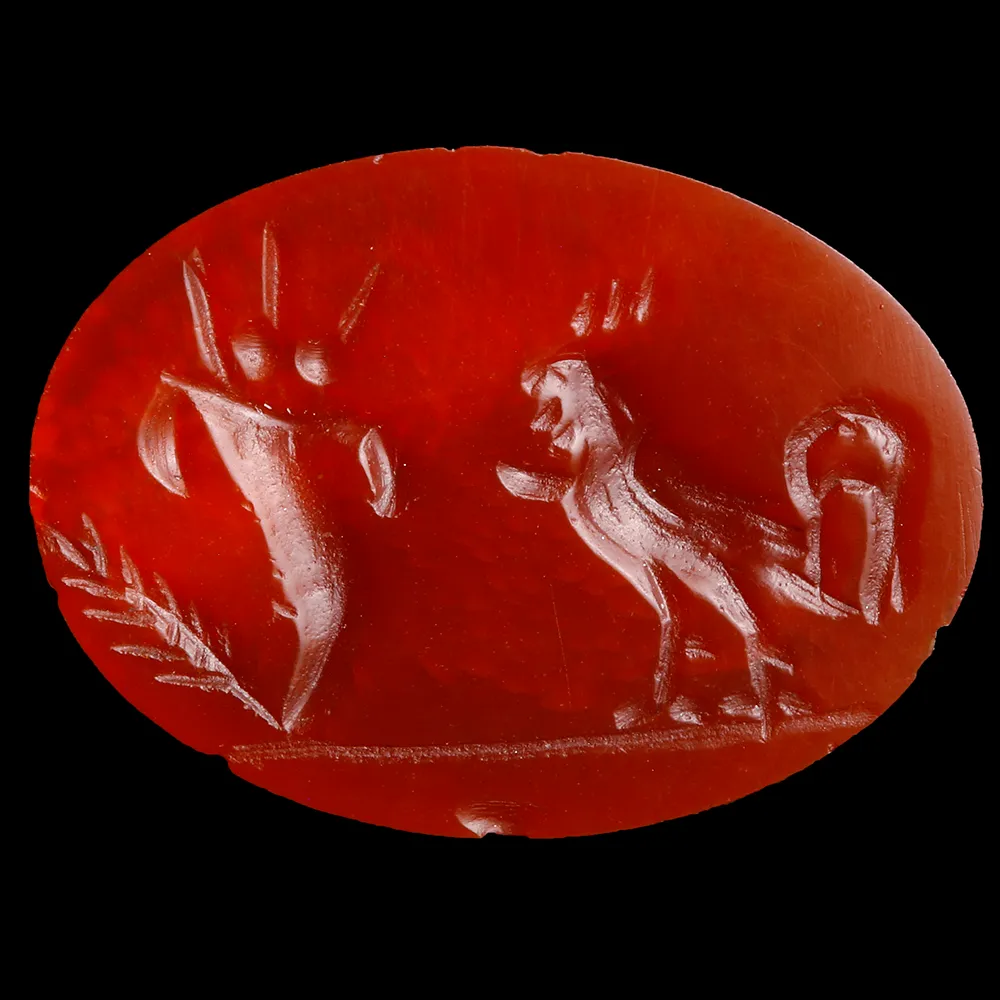Intaglios: Tiny Masterworks

What is an Intaglio?
One of the most beautiful artistic forms to survive from ancient times, an intaglio is a small image that has been intricately engraved into a gemstone and then usually set in a piece of jewellery, most commonly a ring. The intaglio can be set in the jewellery in two fashions, either with the engraving facing the wearer (to be used as a seal), or turned upside down so that the image can be observed under the surface of the stone. Many varieties of exquisitely coloured semi-precious stones were used for intaglios, including amethyst, agate, chalcedony, cornelian, garnet, jasper, lapis lazuli and obsidian, to name just a few.
Engraving in Antiquity
The intaglio has its origins in Sumer in the 4th millennium BC with the creation of cylinder and stamp seals, whereby decorations and patterns were engraved into soft stones. However, it is not until the Archaic Period in Greece, when Greek artists developed new techniques for the decoration of stones, that gemstone engraving, as we know it, had its beginnings. During the Hellenistic period and the early Roman Empire, the art of intaglio engraving reached its apogee, with there being a steady decline in craftsman ship in the later empire, until a revival of interest with the Byzantines and later during the Renaissance.
Methods of Engraving
The Greek artists of the sixth century BC developed the technique of using a cutting wheel and a drill, probably driven bow a bow, to replace the older method of the freehand gouging of stones. These techniques were adopted by the Romans and, with the formation of the empire, there appeared a greater variety of stones and gems, gathered from the East and Egypt, with which to form intaglios. The Romans also developed the method of using abrasive powder from harder substances to cut away at the gems. The difficulty of engraving an intaglio, and thus the expense they would cost to buy one, made owning an intaglio a mark of status.
Gods, Emperors, Flora and Fauna
The subjects that were used for intaglios are as diverse as the stones in to which they were engraved. Depictions of the gods and heroes, such as Jupiter, Diana and Aeneas, were favourite themes. However, flora and fauna were also a commonly used theme, with each motif, or combination of motifs, having a unique symbolism which was thought to grant the wearer prosperity, fortune, and other auspicious circumstances. Romans emperors would also have their portraits engraved into gems and people of significance in the Roman Empire would have their own unique intaglios that they would use as seals to authenticate any legal documents or letters.










